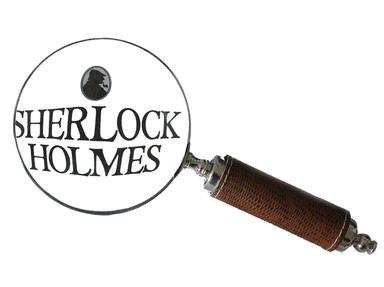Quiz Answer Key and Fun Facts
1. In "The Blue Carbuncle", how is Holmes able to tell from Henry Baker's hat that his wife does not love him anymore?
2. In "The Yellow Face", Holmes examines a pipe. How can he tell that its owner values that particular pipe?
3. After studying a golden pince-nez left at a murder scene, how was Holmes able to tell that its owner had made two visits to the optician?
4. It was very clear to Holmes that Mr. Trevor, who had been involved with the "Gloria Scott", had been fearing for his life for the last year or so. Why?
5. In "The Disappearance Of Lady Frances Carfax", Holmes can be certain that Watson shared a cab with someone earlier that morning. What gave Watson away?
6. When Watson bought his practice in Paddington, just before "The Adventure of the Stockbroker's Clerk" he had a neighbour who also was a doctor. Holmes could see that Watson had gotten the best practice by what feature of the building?
7. Holmes knew right from the start the initials of Black Peter's murderer. Where did he find them?
8. The unhappy John Hector MacFarlane from "The Norwood Builder" was someone Holmes claimed to know nothing about, except that he was a bachelor, a Freemason, a solicitor and an asthmatic. What gave away the Freemasonry?
9. Miss Mary Sutherland gave away her business ("A Case of Identity") as a delicate love matter before she had even opened her mouth. How?
10. Watson decided at an early stage (just prior to the events described in "The Sign of Four") to challenge Holmes' skills in observation and logical deduction by handing him a gold watch and asking what he could deduce from it. Who was the original owner of this watch?
Source: Author
Twotallgnome
This quiz was reviewed by FunTrivia editor
agony before going online.
Any errors found in FunTrivia content are routinely corrected through our feedback system.

